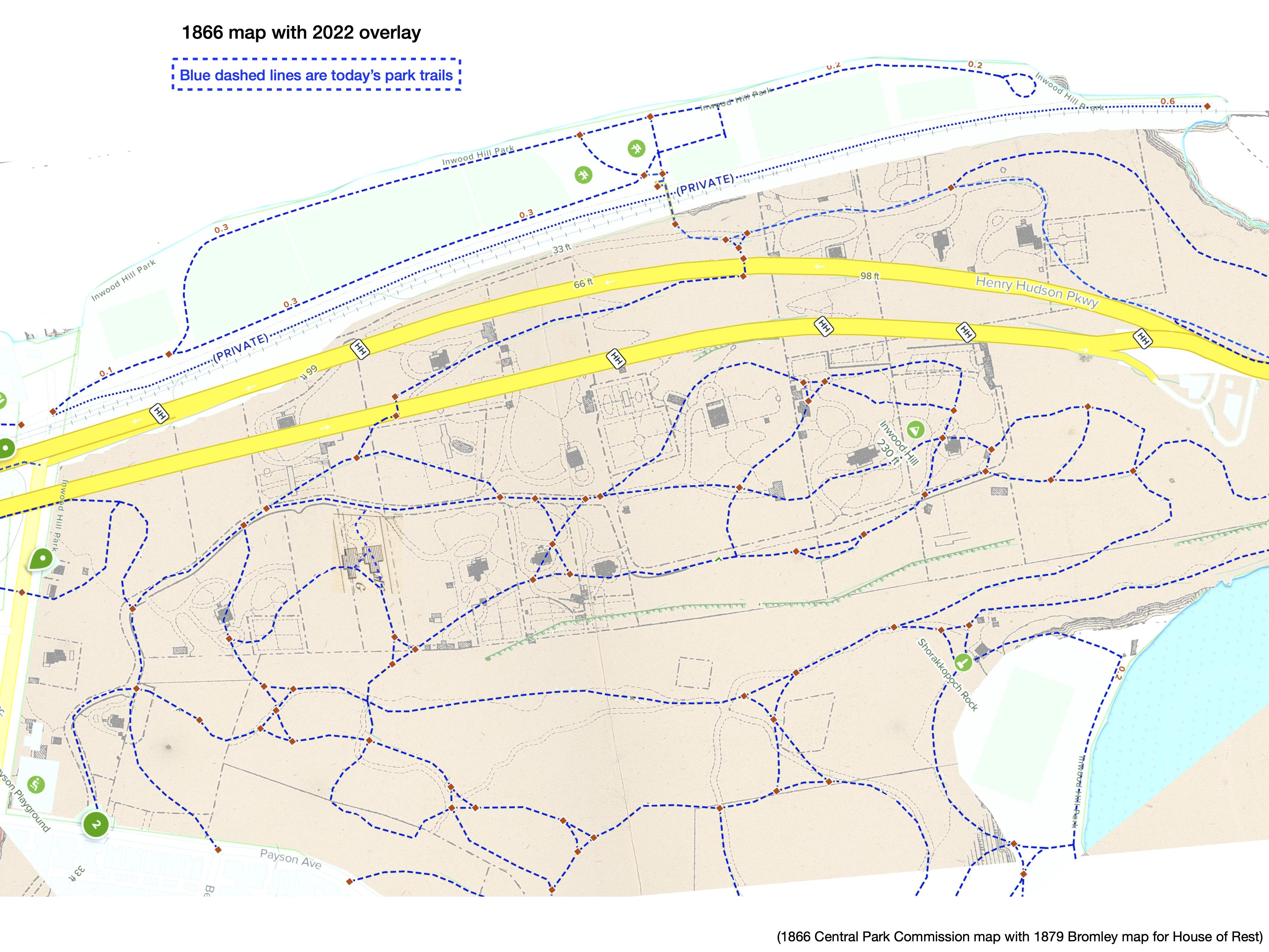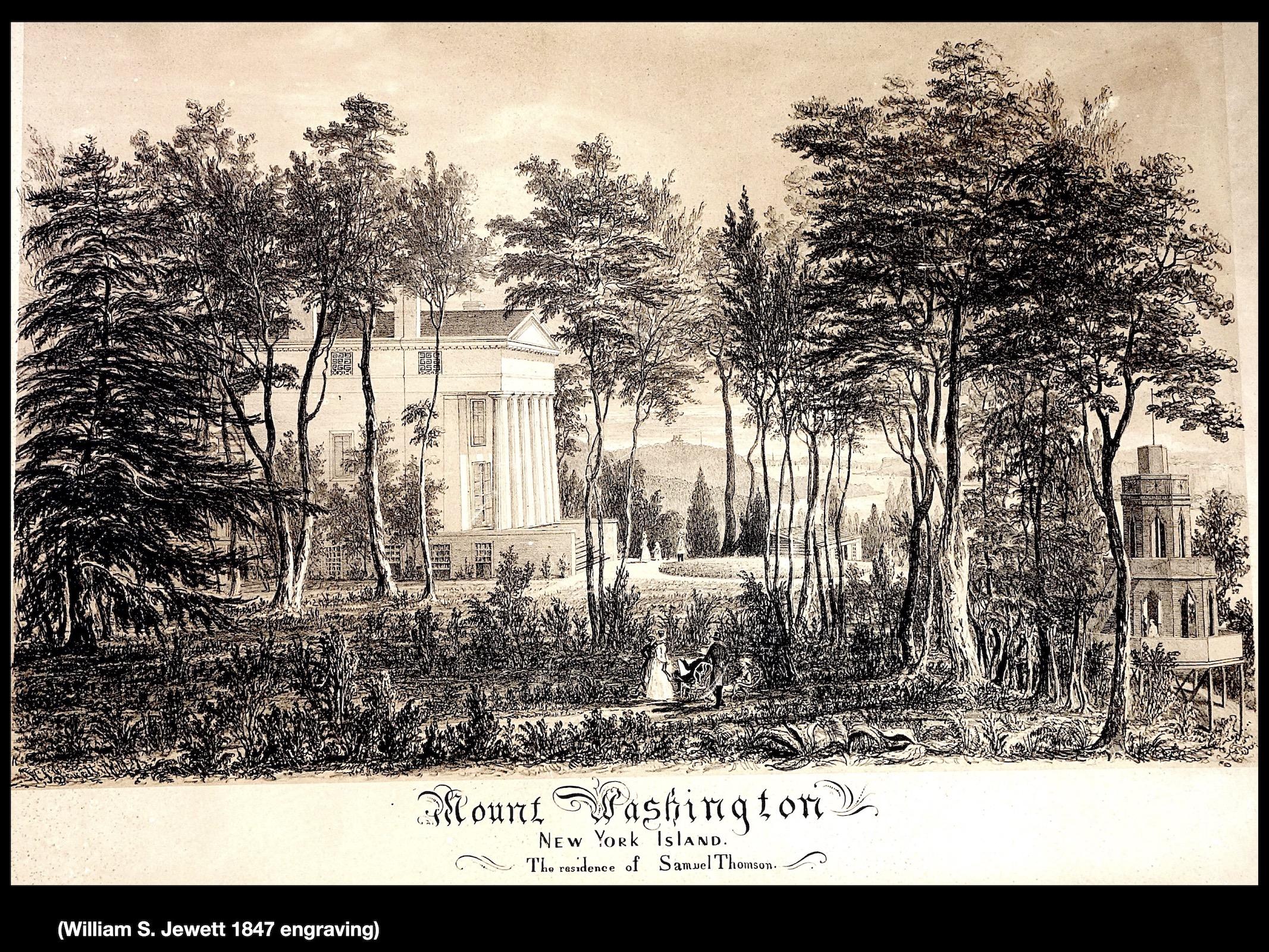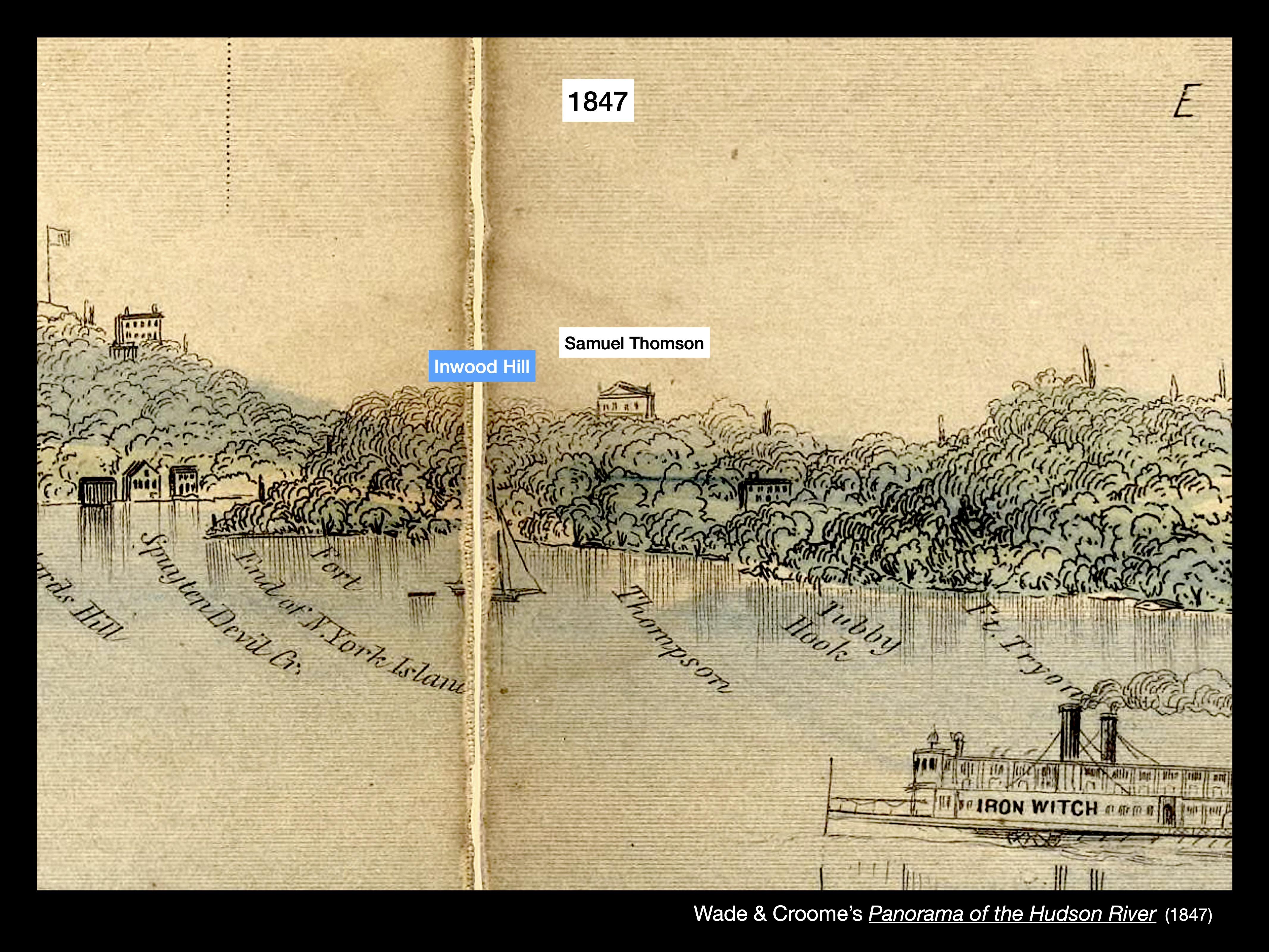Home › Forums › The Industrial Era › “Ghost Homes” atop Inwood Hill
- This topic has 7 replies, 3 voices, and was last updated 2 years ago by
julieabellhorn.
-
AuthorPosts
-
-
April 11, 2022 at 1:49 pm #2760
Inspired by Nick’s map-warping skills I’ve been using maps to rediscover the 1860s home sites that were once atop Inwood Hill. These were big and lavish weekend homes for retail merchants of the day: Brooks, Straus, McCreery and others. The homes not destroyed by fire were eventually demolished in the mid 1930s during parkway and bridge projects.
The demo crews did a good job of clearing the structures to ground level, but left behind were a fair number of wells, cisterns, cellars and foundations. Here’s a map, if you’d like to try some armchair exploration yourself. Except for winter months, visiting the sites is complicated by an established population of poison ivy plants covering much of the off-trail areas. It’s the 1866 Central Park Commission map overlain by the current alltrails.com map

-
April 11, 2022 at 9:36 pm #2764
I never quite realized that there were so many structures on top of Inwood Hill. It does not look like much of it could have been forested with all those buildings and gardens. Are there any landscapes depicting Inwood Hill from that time?
-
April 12, 2022 at 9:27 am #2765

-
April 12, 2022 at 10:04 am #2766

-
-
April 12, 2022 at 10:05 am #2767

-
April 13, 2022 at 8:19 am #2771
Hi Don, nice to see you on this forum. Your map looks wonderful and the images are very cool! I remember seeing some features in Inwood Hill Park that seemed to suggest earlier development and now I know what I was seeing. Thanks for sharing.
I would just offer one bit of caution: if you are intending to share this information more widely, you might remove mention of the wells and cisterns that still remain in the park. As you may know, these shaft features, along with privies, became receptacles for trash after their use life ended, and with privies, sometimes while they were still in use. Archaeological sites often attract pot hunters who know to pinpoint shaft features for potential goodies, such as bottles. Digging in woodlands of NYC Parks is illegal, although pot hunters are not necessarily the most law-abiding sorts. It’s very possible these features have already been looted over the years, but in case any are still intact, it’s probably best not to draw attention to them too widely. Thanks for your understanding. Best, Julie
-
April 13, 2022 at 3:42 pm #2784
Hi Julie,
I’d like to find out when “high service” water finally reached the hilltop homes in north Manhattan and Kingsbridge. It would have been sometime after 1872, when the HB tower was completed. But how long did it take to get the infrastructure built? Once the homes had running water, cisterns and wells would have become unnecessary.
Accounts of the early 1900s fires which destroyed about a third of the homes all have a common thread… the fire hydrants were too far away and at too low an elevation to deliver effective pressure.
-
April 13, 2022 at 5:48 pm #2785
Hi Don, I don’t know this answer for sure, but it’s possible municipal water service never made it up to the heights of Inwood Hill before the area was acquired for parkland in 1916. The 1913 Sanborn map pages do not indicate that there were water lines under the streets there. And since these were fire insurance maps, they were usually pretty good about showing where the water lines existed.
We have also found that the dates that infrastructure became available did not necessarily coincide with when buildings were actually hooked up to city services. Many times the hookups lagged by a number of years for various reasons. And often wells and cisterns continued to be used many years after piped city water was available, either as a supplemental water source, or simply because it was there and free! Hope this helps!
-
-
AuthorPosts
- You must be logged in to reply to this topic.